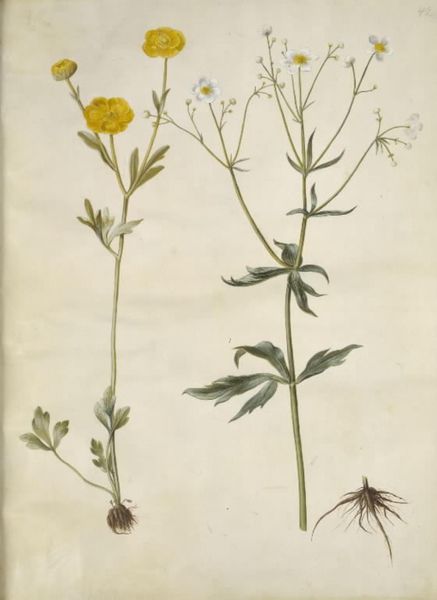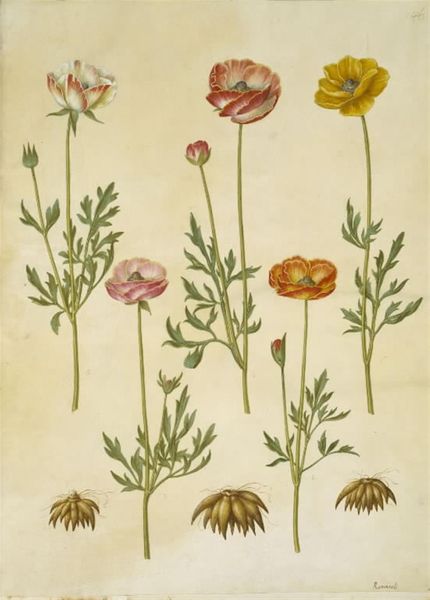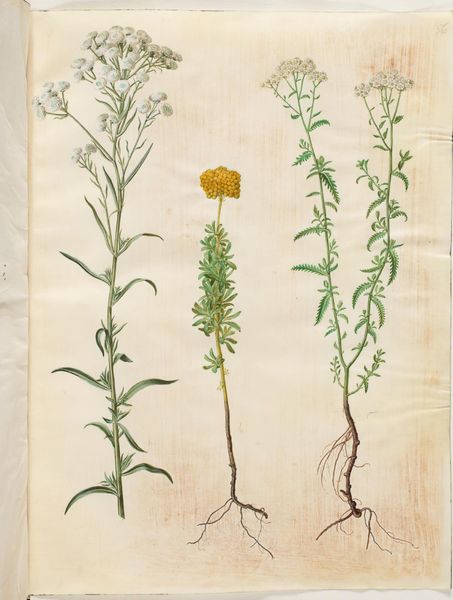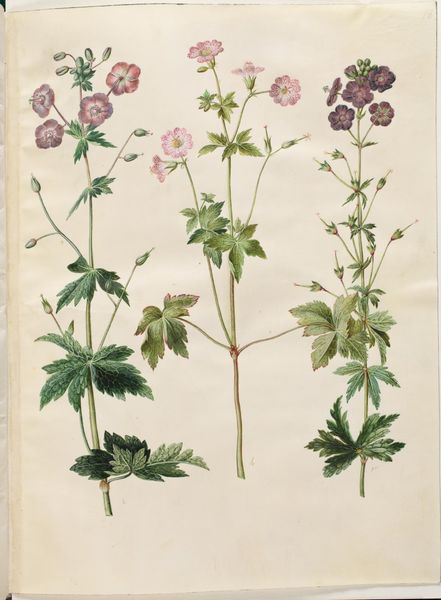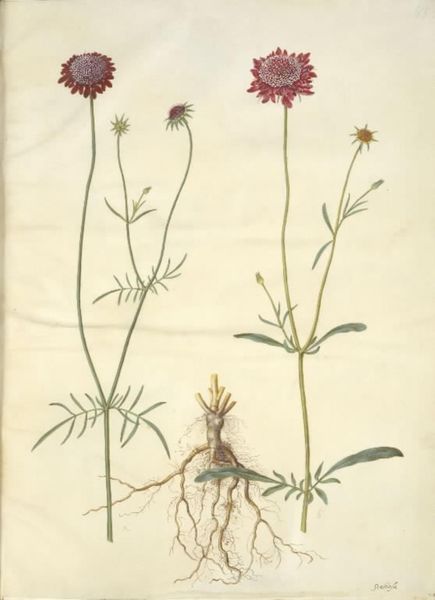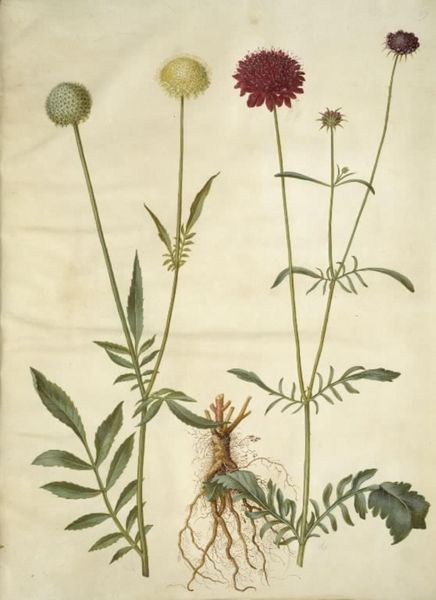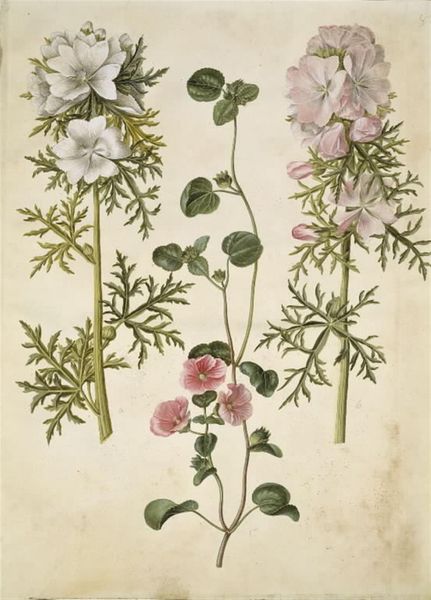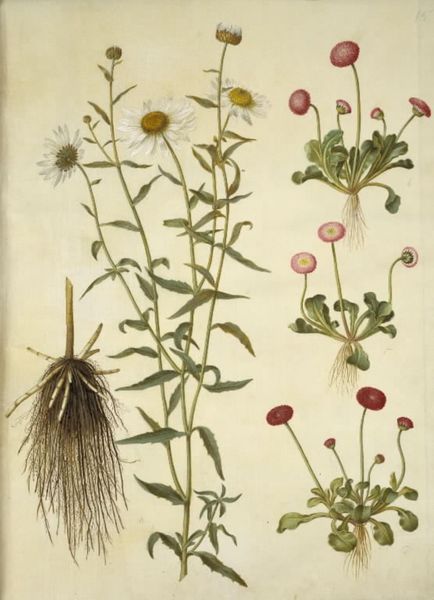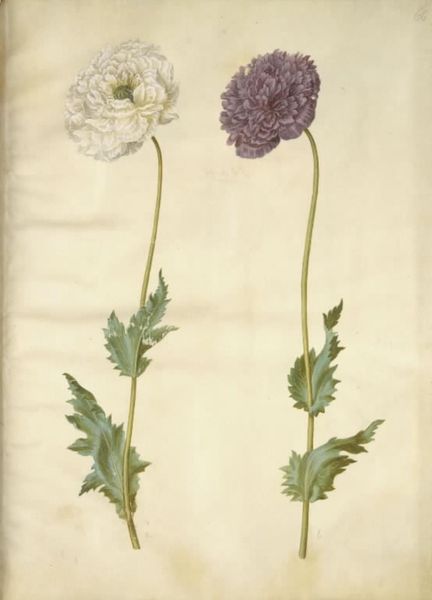
Roemeria hybrida (violet hornvalmue); Glaucium corniculatum (rød hornskulpe) 1649 - 1659
0:00
0:00
drawing, gouache, watercolor
#
drawing
#
gouache
#
watercolor
#
watercolour illustration
#
northern-renaissance
#
botanical art
#
watercolor
Dimensions: 505 mm (height) x 385 mm (width) (bladmaal)
Editor: So, this is "Roemeria hybrida; Glaucium corniculatum" by Hans Simon Holtzbecker, dating from around the 1650s. It’s a watercolor and gouache drawing, quite delicate. What do you notice in terms of the broader social context of botanical art at this time? Curator: What immediately strikes me is how this image exists within a specific historical power structure. Botanical illustrations were often commissioned by wealthy patrons and used to classify and control the natural world, reflecting a desire to dominate and profit from it. Consider how these images contributed to the rise of colonialism and the exploitation of resources. Editor: That's a really interesting point. It wasn't something I immediately considered. But why these specific flowers? Do they hold any significance beyond their botanical characteristics? Curator: Absolutely. During this period, the symbolism of flowers was deeply embedded in culture. These particular plants might represent specific medicinal properties, social identities, or even moral virtues. We might even consider how these flowers participate in cultural meanings around gender during the period—how might we, through a feminist lens, understand the role of flowers at the time? Editor: I guess they could have been tied to traditional roles like healing or beauty, or as symbols of wealth and status displayed in gardens. Did Holtzbecker create the drawing within a specific context? Curator: Exactly! Think about Holtzbecker's patrons and audience. Where would this image have been viewed and by whom? We might analyze its function within the scientific, economic, and artistic spheres of its time. Also, consider how access to such imagery was restricted along lines of class, race, and gender. Editor: Wow, I never would have looked at it that way! It feels more complicated now. I’m starting to see it as not just a pretty picture, but also something shaped by, and perhaps even shaping, social inequalities of the time. Curator: Precisely. By critically engaging with historical and social contexts, we can challenge the supposed neutrality of art and expose its powerful role in perpetuating or challenging societal norms. It encourages us to explore art with a politically informed lens. Editor: I learned a lot! Thinking about the purpose behind these images, and their relationship with cultural norms really opens a door into understanding historical structures of power. Thanks!
Comments
No comments
Be the first to comment and join the conversation on the ultimate creative platform.

